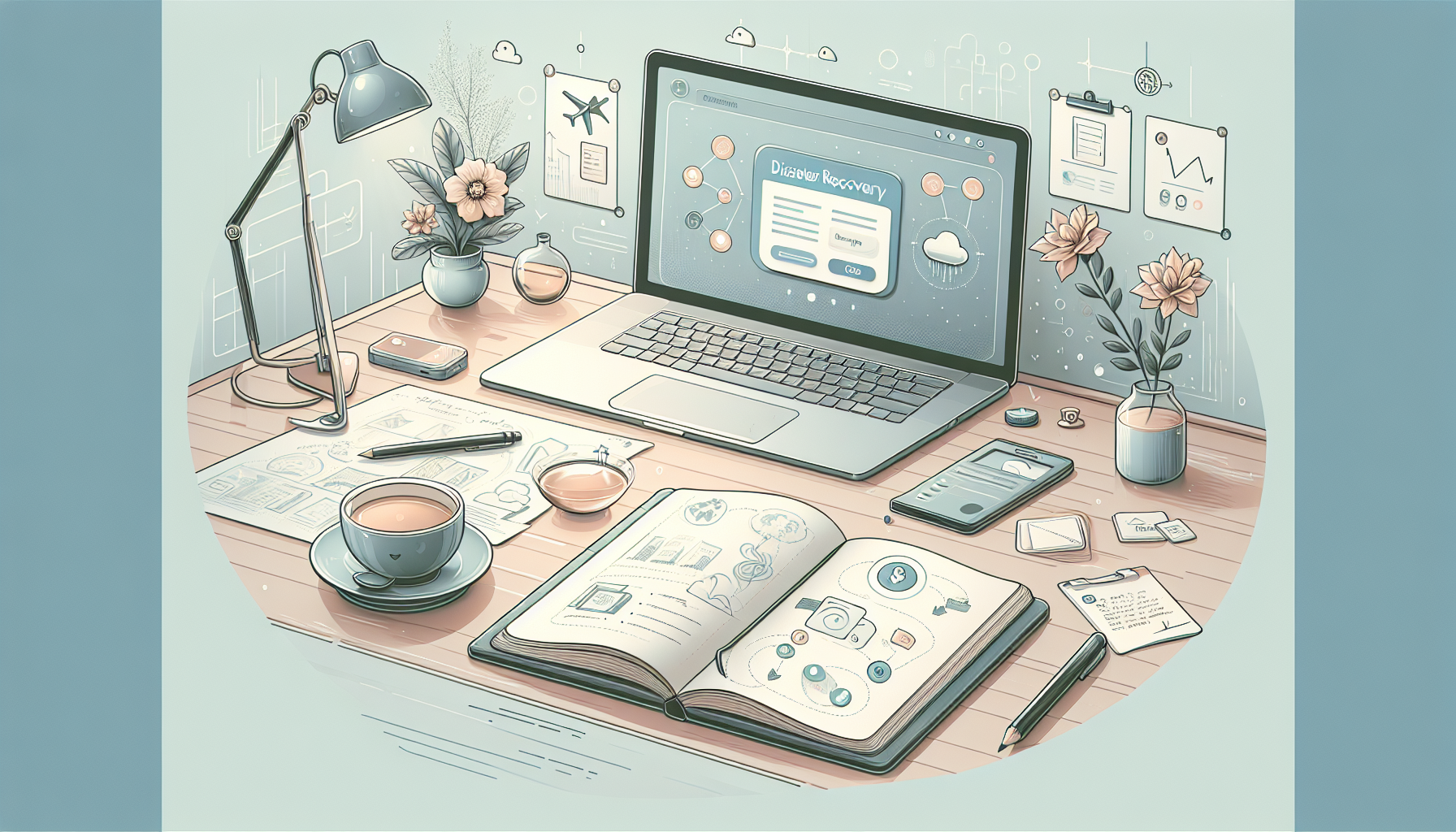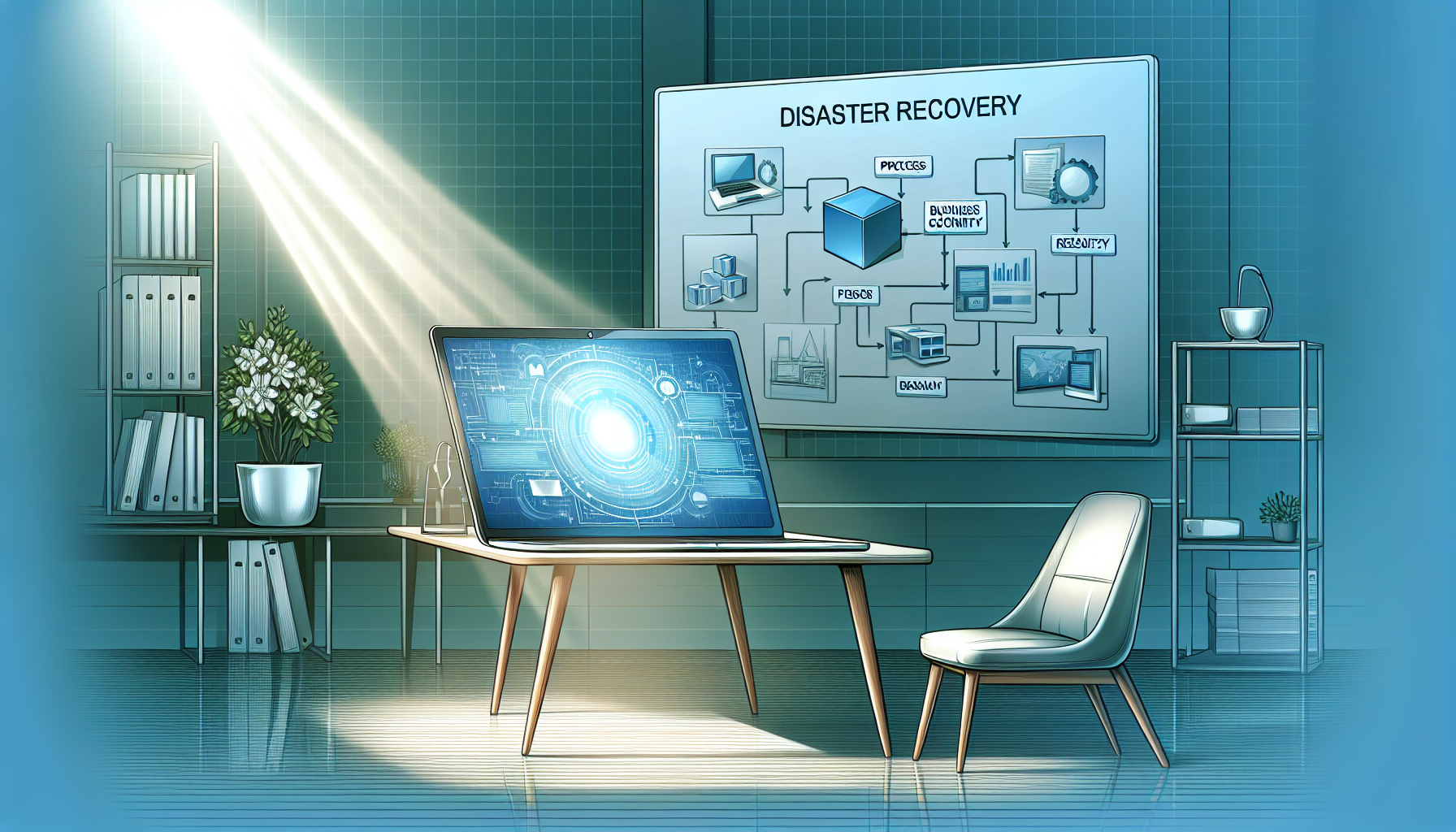Preparing for disasters can feel overwhelming, can’t it? Balancing the need for a solid recovery plan with the chaos that unexpected events bring is no small feat. Many of us worry about the gaps in our plans and how prepared our teams really are.
But don’t fret! If you stick around, I’ll guide you through some fantastic ChatGPT prompts that will make your disaster recovery planning more effective and less daunting. You’ll soon wield the power of AI to create a strategy that protects your organization and gives you peace of mind.
From crafting a solid recovery plan template to assessing risks and communication strategies, we’ll explore how to leverage ChatGPT for all your disaster recovery needs. Let’s dive in and make planning easier together!
Key Takeaways
- Use ChatGPT prompts to easily create and customize your disaster recovery plan.
- Focus on industry-specific risks and tailor strategies accordingly.
- Prompts can help assess risks, develop communication plans, and evaluate recovery effectiveness.
- Testing your plans through simulations is crucial for identifying weaknesses.
- Customizing prompts will yield more relevant results, enhancing your planning process.

Top ChatGPT Prompts for Effective Disaster Recovery Planning
Disaster recovery planning is crucial to ensure business continuity in the face of unexpected disruptions.
Using ChatGPT can streamline the creation of effective recovery strategies.
Here are some top prompts you can copy and paste into ChatGPT to guide your planning efforts:
- “List the key components of an effective disaster recovery plan.”
- “Create an outline for a disaster recovery strategy tailored to a small business.”
- “Suggest best practices for disaster recovery planning in the healthcare sector.”
- “Identify common pitfalls in disaster recovery planning and how to avoid them.”
- “Explain how to evaluate the effectiveness of a disaster recovery plan post-implementation.”
How to Use ChatGPT for Disaster Recovery Strategy Development
To develop a disaster recovery strategy with ChatGPT, start by defining your business’s unique risks and requirements.
Input specific scenarios to make the output more relevant.
Follow these actionable steps:
- Input your business type and industry to tailor recovery plans.
- Use prompts like “What are the top three risks for my industry during a disaster?”
- Ask for a step-by-step recovery strategy with prompts like “Create a recovery timeline for a manufacturing company after a natural disaster.”
- Request examples of successful disaster recovery strategies, such as “Share case studies of effective recovery in the tech sector.”
ChatGPT Prompts for Creating a Disaster Recovery Plan Template
A good template can save you time when crafting a disaster recovery plan.
Use ChatGPT to generate a customizable disaster recovery plan template with these prompts:
- “Provide a template for a disaster recovery plan that includes sections on risk assessment, response strategies, and recovery procedures.”
- “List essential elements that must be included in a disaster recovery plan template for non-profit organizations.”
- “Create a detailed checklist for disaster recovery planning.”
- “Outline the sections needed for a technology-specific disaster recovery plan.”
Example Prompts for Assessing Risks in Disaster Recovery
Assessing risks is vital for a robust disaster recovery plan.
ChatGPT can assist you in identifying potential vulnerabilities effectively.
Here are some example prompts to help you assess risks:
- “Identify potential risks associated with data loss in cloud storage.”
- “List the top five risks to business operations during a pandemic.”
- “Suggest methods to evaluate the physical security of my organization’s data center.”
- “How can I perform a vulnerability assessment for our IT infrastructure?”

Using ChatGPT to Develop Disaster Recovery Communication Plans
Communication is key during a disaster, and having a solid communication plan can make a huge difference in recovery efforts.
ChatGPT can help create tailored communication strategies suited for various audiences.
Here are some prompts to develop effective disaster recovery communication plans:
- “Draft a communication plan for internal stakeholders during a data breach.”
- “Outline key messages to convey to customers after a service disruption.”
- “Generate a list of communication channels to be used during a disaster.”
- “Create a timeline for messaging updates in the aftermath of a natural disaster.”
These prompts will help ensure your team is ready to convey critical information efficiently and transparently.
Prompts for Testing and Evaluating Disaster Recovery Plans
Testing and evaluating your disaster recovery plan is essential to ensure it works during a real crisis.
ChatGPT can generate prompts to simulate various scenarios and provide insights for improvement.
Use these prompts to test and evaluate your plans:
- “Create a checklist for conducting a disaster recovery simulation.”
- “Suggest metrics to evaluate the effectiveness of a disaster recovery plan.”
- “Develop a series of questions for a post-simulation debriefing session.”
- “Outline methods for auditing our disaster recovery processes annually.”
Incorporating these prompts into your testing process can help identify weaknesses and enhance your overall recovery strategy.
FAQs about Disaster Recovery Prompts for ChatGPT
When using ChatGPT for disaster recovery prompts, you might have some questions about its capabilities and best practices.
Here are some frequently asked questions to clarify how to make the most of ChatGPT in your recovery planning:
- “What types of disaster recovery plans can ChatGPT help create?”
- “How do I ensure that ChatGPT provides relevant and tailored responses?”
- “Can ChatGPT assist with legal considerations in disaster recovery?”
- “What are the limitations of using ChatGPT for disaster recovery prompts?”
These questions can guide your exploration and help you utilize ChatGPT effectively in your disaster recovery efforts.
Tips for Customizing Your Own Disaster Recovery Prompts
Customizing prompts can lead to more tailored and effective outputs in your disaster recovery planning.
Here are some tips for crafting your own prompts:
- “Make prompts specific to your industry, e.g., ‘What are unique recovery strategies for the retail industry?’”
- “Use a scenario-based approach, such as, ‘Simulate a recovery plan for a mid-sized financial firm after a cyberattack.’”
- “Ask for situational analysis, like ‘Evaluate the recovery risks of a remote workforce during a natural disaster.’”
- “Incorporate urgency, e.g., ‘Generate a 24-hour response plan for a severe weather event.’”
By following these tips, you’ll create prompts that yield more actionable and relevant insights for your disaster recovery planning.

Refining Your Disaster Recovery Plan with ChatGPT
Once you have a draft of your disaster recovery plan, you can further refine it using ChatGPT.
Ask targeted questions to verify the plan’s effectiveness and identify areas for improvement.
Here are some useful prompts:
- “Review my disaster recovery plan for gaps, and suggest improvements.”
- “List the factors that could cause my recovery plan to fail.”
- “How can I incorporate feedback from my team into my disaster recovery strategy?”
- “What are the latest trends in disaster recovery planning that I should consider?”
Integrating ChatGPT with Business Continuity Plans
Business continuity plans go hand-in-hand with disaster recovery strategies.
Using ChatGPT, you can effectively integrate both for a comprehensive approach.
Use these prompts to create an integrated plan:
- “How can I align my disaster recovery plan with my business continuity objectives?”
- “Generate a flowchart that links disaster recovery actions to business continuity processes.”
- “Suggest key performance indicators (KPIs) for measuring business continuity effectiveness.”
- “What should I include in a joint communication plan for business continuity and disaster recovery?”
Leveraging ChatGPT for Training and Awareness
Effective disaster recovery isn’t just about having a plan; it’s also about ensuring everyone knows their role.
ChatGPT can help you design training and awareness programs.
Here are some prompts to develop training materials:
- “Create a training manual for employees on disaster recovery procedures.”
- “What topics should be covered in a disaster recovery awareness workshop?”
- “Draft quiz questions to test employees on disaster recovery knowledge.”
- “Outline a continuous training program for disaster recovery readiness.”
Case Studies and Real-World Applications of ChatGPT in Disaster Recovery
Learning from real-world examples can provide valuable insights into disaster recovery strategies.
ChatGPT can help generate case studies that illustrate effective recovery efforts.
Use these prompts to explore real-world applications:
- “Provide examples of companies that successfully implemented disaster recovery plans using AI.”
- “Summarize a case study of an organization recovering from a cyberattack.”
- “What lessons can be learned from recent disasters about effective recovery planning?”
- “Identify industries that have benefited from using AI in their disaster recovery processes.”
FAQs
ChatGPT can help streamline the disaster recovery planning process by generating templates, prompts, and strategies. It aids in risk assessment and communication planning, making the overall development more efficient and effective.
You can customize prompts by defining specific scenarios, objectives, or resources related to your organization. Tailor the language and context to meet your unique requirements for a more relevant and actionable output.
ChatGPT can help create communication plans that outline protocols for internal and external messaging during a disaster. It can generate templates for updates, briefings, and emergency contact lists tailored to your organization’s needs.
Yes, ChatGPT can help evaluate disaster recovery plans by providing prompts for testing scenarios, feedback collection, and lessons learned documentation. This helps ensure that the plans are effective and meet organizational needs.
